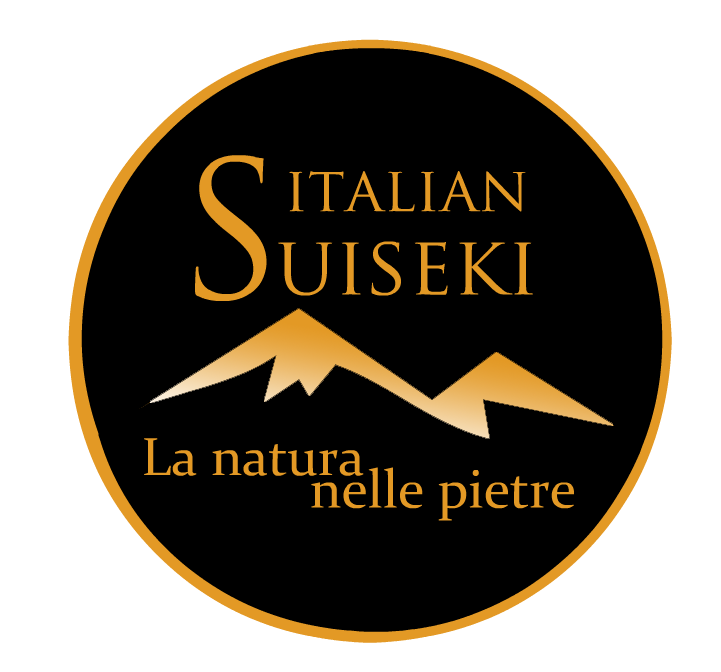Covid Strikes Again… and Again
|
Again... Despite the pandemic
The 9th Japan Suiseki Exhibition
by Wil in Japan
Mr.Wil, author of this article, is one of the Directors of the NSA (Nippon Suiseki Association), and gives Italian readers a brief report about the ninth edition of the JSE, the most important suiseki exhibition in the world, in terms of quality and quantity of the suiseki on display, carefully selected. For the second time, due to Covid and the restrictions to contain the pandemic, foreign participants were unable to travel to Japan and the exhibition itself was in doubt, but it nevertheless took place, albeit with limited participation from Japan. This report is therefore even more important, being the only one that comes to us to describe, with full knowledge of the facts, some of the stones on display, selected perhaps for an exhibition that deviates from the canons we know. We are therefore deeply grateful to Wil, for helping us understand, with his explanations, what the stones do not always say.
|
|
|
And so the fun just never seems to end.
The Omicron wave was somewhat delayed in its wash over Japan, but come it did nonetheless, and just as planning for the Kokufu and suiseki exhibition was getting underway. Soft lockdown restrictions went back into place, borders were tightly sealed, and how museums would react remained unclear.
Plans had to be put on hold… again.
|
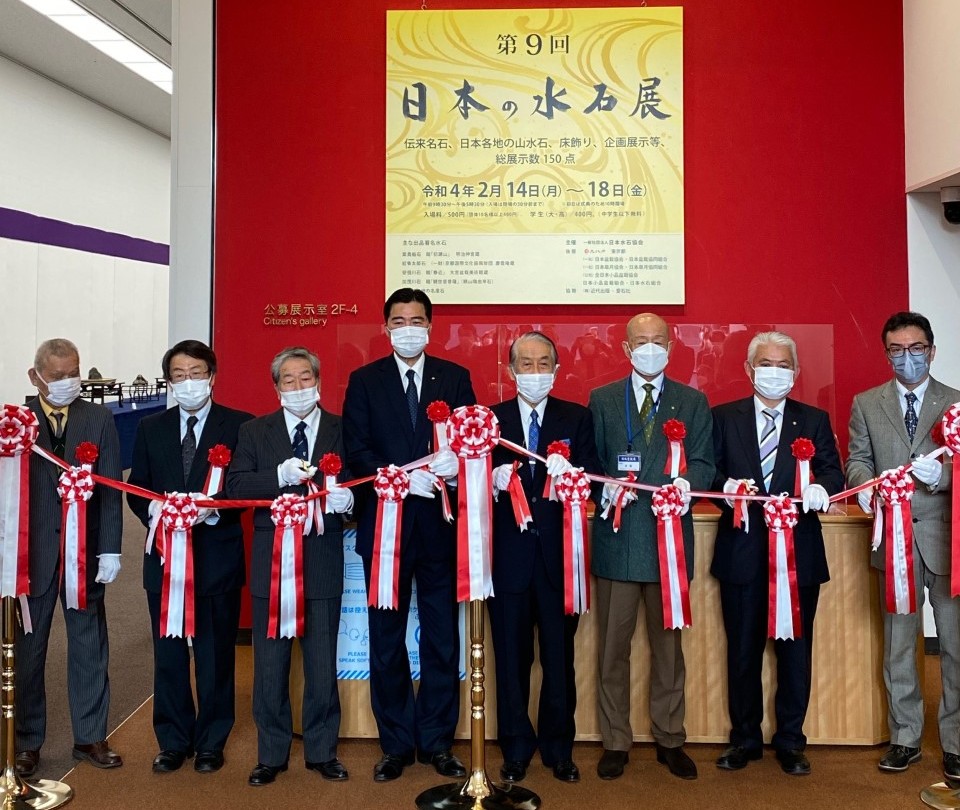 |
|
While certain exhibitions were indeed canceled and many museums shifted to advanced-reservation, appointment-only admission policies, the Tokyo Metropolitan Art Museum kept its doors open to both the suiseki association, and the public at large.
The uncertainty meant that publication of the catalogue was delayed, but in the end the show went on.
Having said that, the atmosphere of the exhibition was subdued, to say the least.
While participation from abroad was consistent with years past, no visitors from outside of Japan were able to attend, and in fact very few from outside of Tokyo deigned venture into the big city either, lest they risk bringing the virus back to their local communities – a fair consideration.
Attendance was accordingly low, but one hopes that those who visited did not leave disappointed.
(in the picture on the left, the opening ceremony)
|
|
| |
|
The star of the show was an antique bonseki, never before seen in the suiseki world. It belongs to the Kohoan temple in Kyoto, which is a sub-temple of the Zen sect Daitokuji complex.
Though the exact date is unclear, it has reportedly been housed there, unmolested and in its current manner, since the late 18th or early 19th century, after Matsudaira Fumaiko (1751–1818) displayed it in one of the temple’s tokonoma during a tea ceremony.
|
| |
|
Its manner of display is not one we see in modern bonseki, though books on the subject from the Edo period illustrate the practice and multiple variations thereof.
The stone is cut perfectly flat, and lacquered on the bottom so as not to scratch the delicate surface of the lacquer tray it is displayed in. Placed directly in the center, a perimeter of small white pebbles was then laid out around it in the so-called Moriyama technique.
The effect is one of visual isolation.
Placed in the black tray on its own, the color of the dark stone would blend in and its form would perhaps be partially lost, but the contrasting white field created by the pebbles around it brings the stone into focus, and draws our eyes directly to it. One should not interpret this in a literal fashion – it is not a mountaintop penetrating through a blanket of clouds – but a suggestion of purity, isolating and elevating the stone to a contemplative, conceptual plane.
One would expect nothing less from a bonseki housed in such an important Zen temple.
|
|
 |
| |
|
|
In stark contrast was the modern Hosokawa school bonseki display nearby. There is little room for lofty interpretation here. Entitled “Mount Ontake”, meticulous brush and featherwork give life to the image of vast mountain range under a full moon in fine white sand, while in the foreground a group of colorful chrysanthemum stones adds a near-view, seasonal flourish. As sensitive and beautiful as it is, its concrete expression is remarkably different from that of the Kohoan bonseki.
|
 |
|
"Mount Ontake"
Hosokawa school bonseki
|
|
| |
|
While we are on the subject, readers of Japan Suiseki Exhibition catalogues will most likely have come across the word “bonsan” and wondered what on earth it meant.
How is it different from “bonseki”? Or “suiseki” for that matter?
While this is not the place to launch into an in-depth analysis of the words’ historical usage, it can be said with certainty that for a time they were used interchangeably and meant the same thing. Specifically, “bonseki” means “tray stone” (盆石), and “bonsan” means “tray mountain” (盆山). And as the majority of bonseki were indeed mountain shaped, and for a time in history the two things were essentially one in the same.
However, in the modern world of bonseki we also do occasionally see non-mountain stones, as witnessed in the previous Hosokawa school display that used pattern stones to give viewers a close up view of a field of flowers, offsetting the landscape in the distance. We also see in bonseki that multiple stones can be used together in one display, and therein lays the difference. The current definition and usage of the word “bonseki” is broad, and while it can refer to a single mountain-shaped stone displayed on its own, it can also include groupings of multiple stones that are not shaped like mountains.
In contrast, in modern times “bonsan” only refers to mountain-shaped stones that are displayed on their own. Most often, they are single peaked, and asymmetrically balanced, though of course those are not definitional requirements so much as they are prevalent tendencies. In truth, the word “bonsan” is not used very often in this day and age, and if you looked hard enough you could most certainly find historical exceptions to the explanation offered above, but this is how people in the NSA use it today.
|
| Back to the exhibition, this year featured a variety of material, including a few fairly unconventional displays that one does not often see in public exhibitions like this. |
|
One was a tokonoma display of a Setagawa ishi in a suiban. If it raised the eyebrows of some, it may have opened the eyes of others.
|
 |
|
|
| Setagawa ishi |
|
|
|
Rather than the finely glazed and carefully shaped suiban we are used to seeing, this is a thick, wavy slab of Shigaraki stoneware, made by contemporary ceramicist Tsujimura Shiro.
Sand is spread in a naturalistic manner in the center, and the stone, with its suggestion of a shallow lake on the top, is placed slightly off to the right.
Is it a boat stone?
Or a landscape stone?
The arguably too small ink painting of the moon overhead is in fact by the same artist, and could guide the viewer’s interpretation in either direction. Yesteryear’s orthodoxy may pass such an expression by without giving it due consideration, but those with more of an imagination would surely have found it inspiring.
|
|
 |
|
| |
| While thinking in this more creative vein, let us consider two other unique displays. One was a charming little Tamagawa ishi, named “Tale of the Toad” in reference to an old Japanese story. |
| |
| |
 |
|
Hats off to the individual who saw the toad when they picked up the stone in the river, and kudos to the daiza carver who completed the picture.
The kumihimo cord knotted in the shape of a turtle adds a bit of auspicious aquatic symbolism, and the decorative mat provides a framework.
Suiseki does not have to be a brooding philosophical quest or high-minded poetic allusion ALL of the time, sometimes it can just be fun.
The literary reference suggested here makes one want to read the story and learn more.
|
Tamagawa ishi
“Tale of the Toad” |
|
|
|
| |
|
A small Kamogawa waterpool stone also demonstrated that there is more than one way of doing things. (picture 7) The stone is named “Chinza fuketsu”, which is difficult to translate concisely, but means something along the lines of “enshrined cave from which cold wind blows”, suggesting a deep opening in the earth with untold mysteries in its depths.
|
| |
|
The “enshrined” aspect of the name pulls it toward the Japanese Shinto tradition, and implies that the cave is sacred, and should be approached with reverence. The arrangement of small grey pebbles around the stone elevates its status by defining a sacred perimeter around it, creating a boundary between our world and the world of the kami that reside within.
Unconventional though such an arrangement may seem, we must keep in mind that there could be a deeper meaning below the surface.
Having said that, from a more practical standpoint it could also be said that while the stone is in fact too small for the suiban, the pebbles enlarge the area it consumes, helping it to balance the space.
One might even argue that the technique has an historical precedent of sorts, as witnessed in the Kohoan bonseki display previously discussed. Here, it accomplishes two things, one conceptual, one visual.
Two birds, one stone (and a handful of pebbles).
|
|
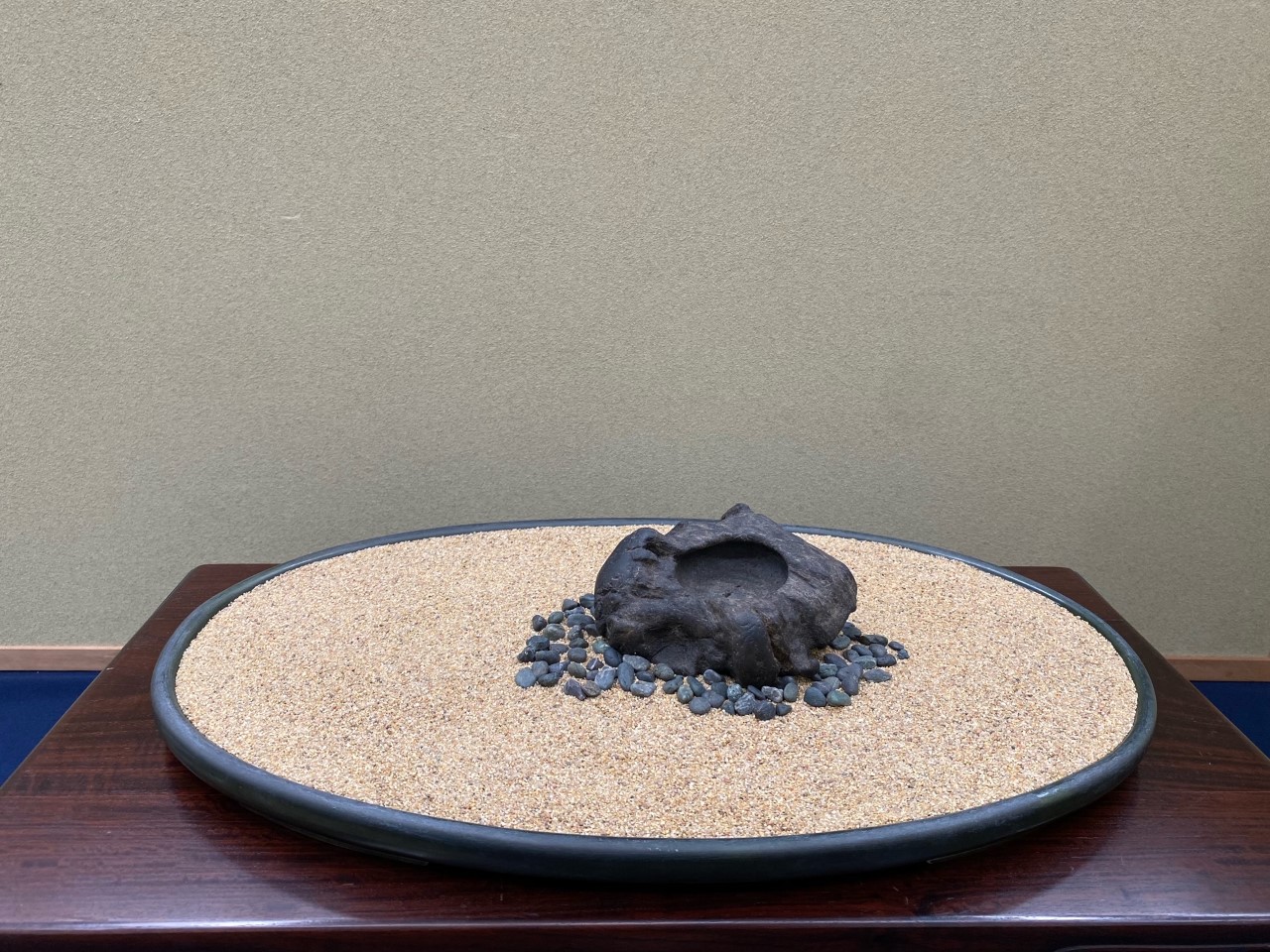 |
| |
|
Kamogawa waterpool stone
“Chinza fuketsu” |
|
| |
|
Of course, the vast majority of displays were more in line with what you would expect to find in a Japanese suiseki exhibition.
This Kanayama ishi from Hokkaido was simply named “Cape”, and presents us with a dramatic seaside promontory. Careful inspection reveals a tunnel passing through its center, and the fan-shaped painting of geese descending against a full moon identifies the season as autumn. One can almost feel the cool breeze blowing over the ocean.
|
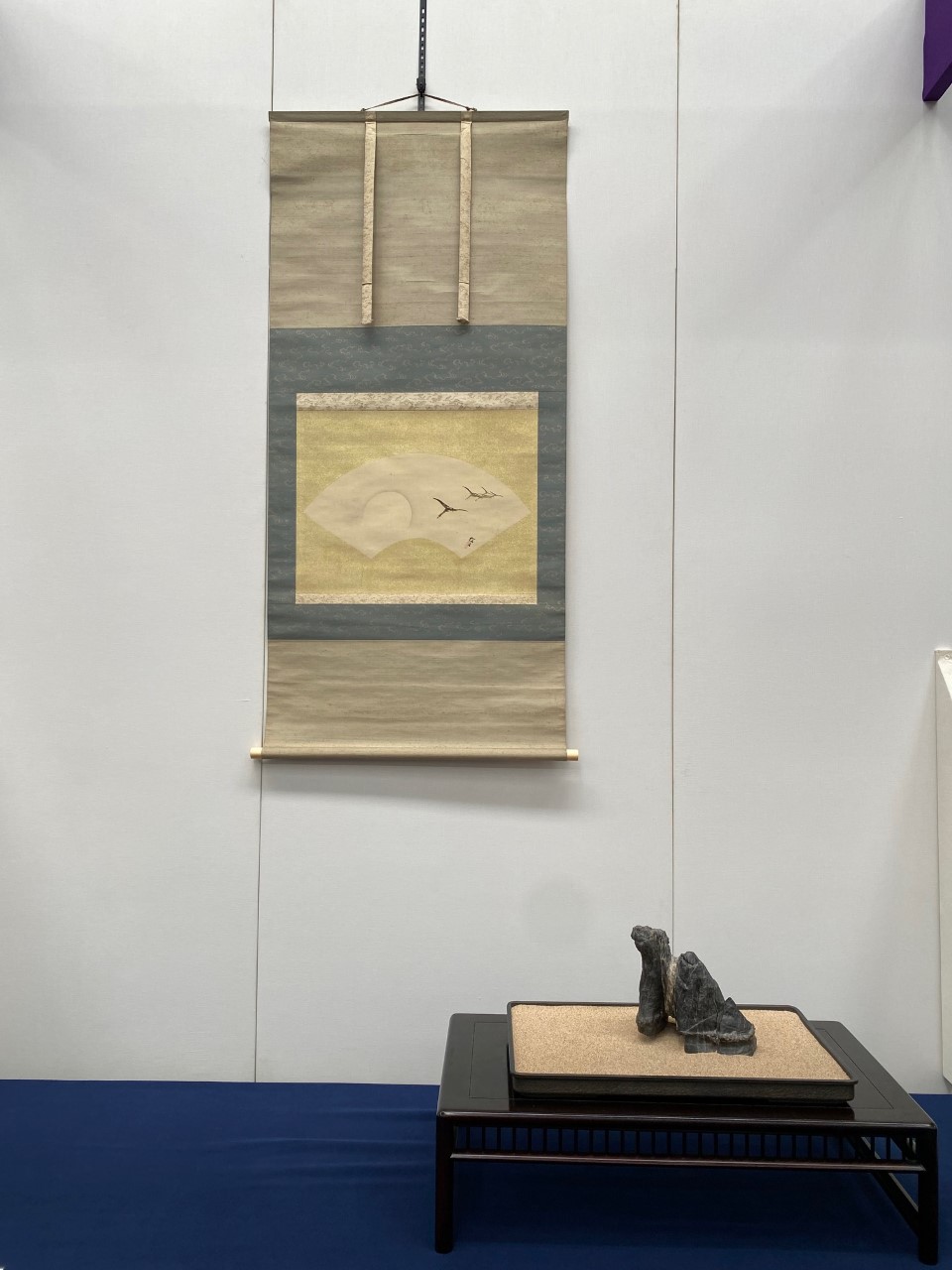 |
|
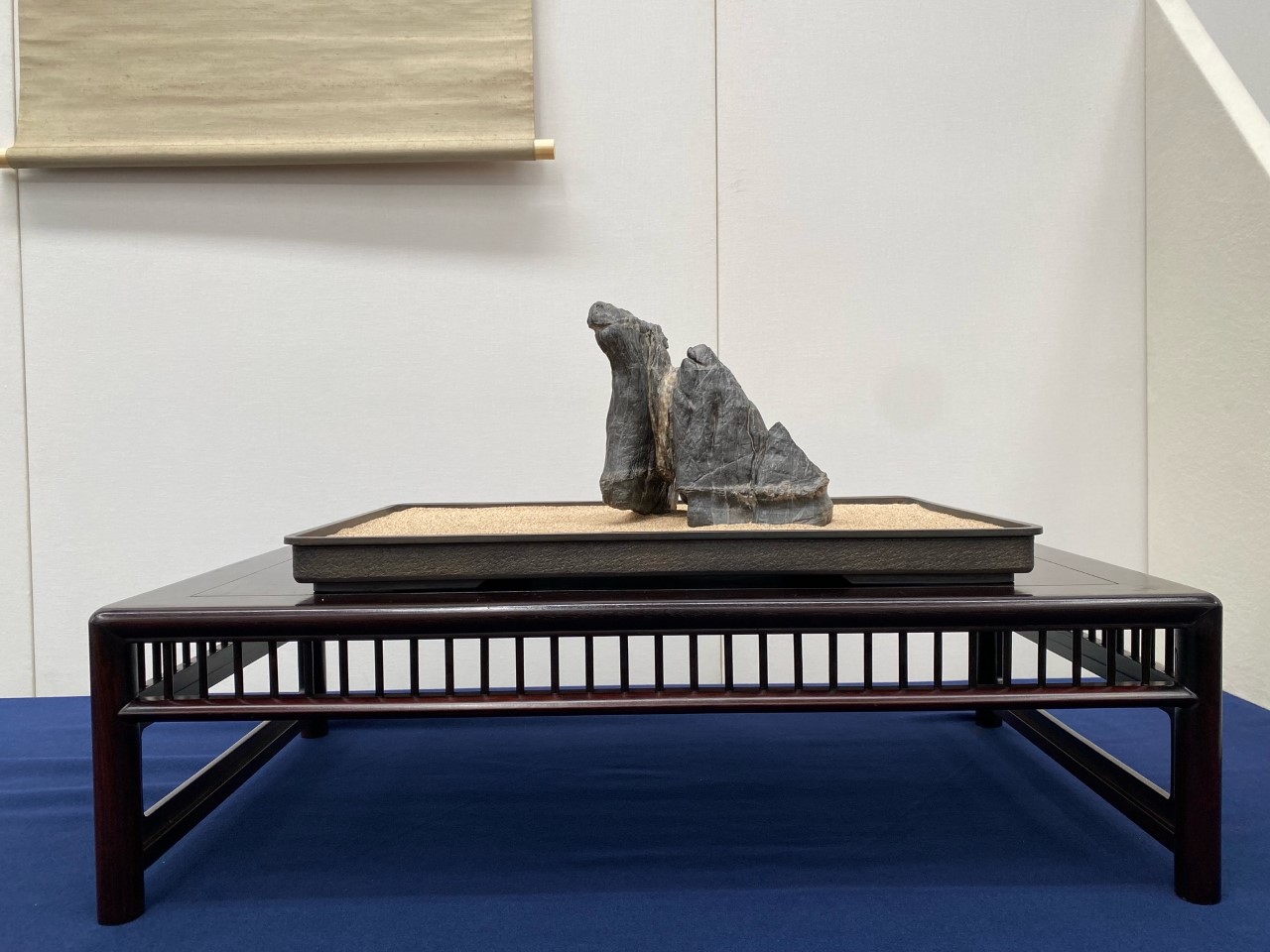
|
Kanayama ishi from Hokkaido
"Cape" |
|
| |
|
Another autumn scene presents a very different picture. This well-known stone has been mistakenly published as an Ibigawa ishi in the past, when in fact it is a beni Kamogawa ishi, with an auburn coloration so deep it is almost unrecognizable. The stone’s soft, dull patina is incredibly old, and suits the subdued tenor of the season established by the painting. Use of the bright white suiban is certainly debatable, but surely the exhibitor had their reasons.
|
|
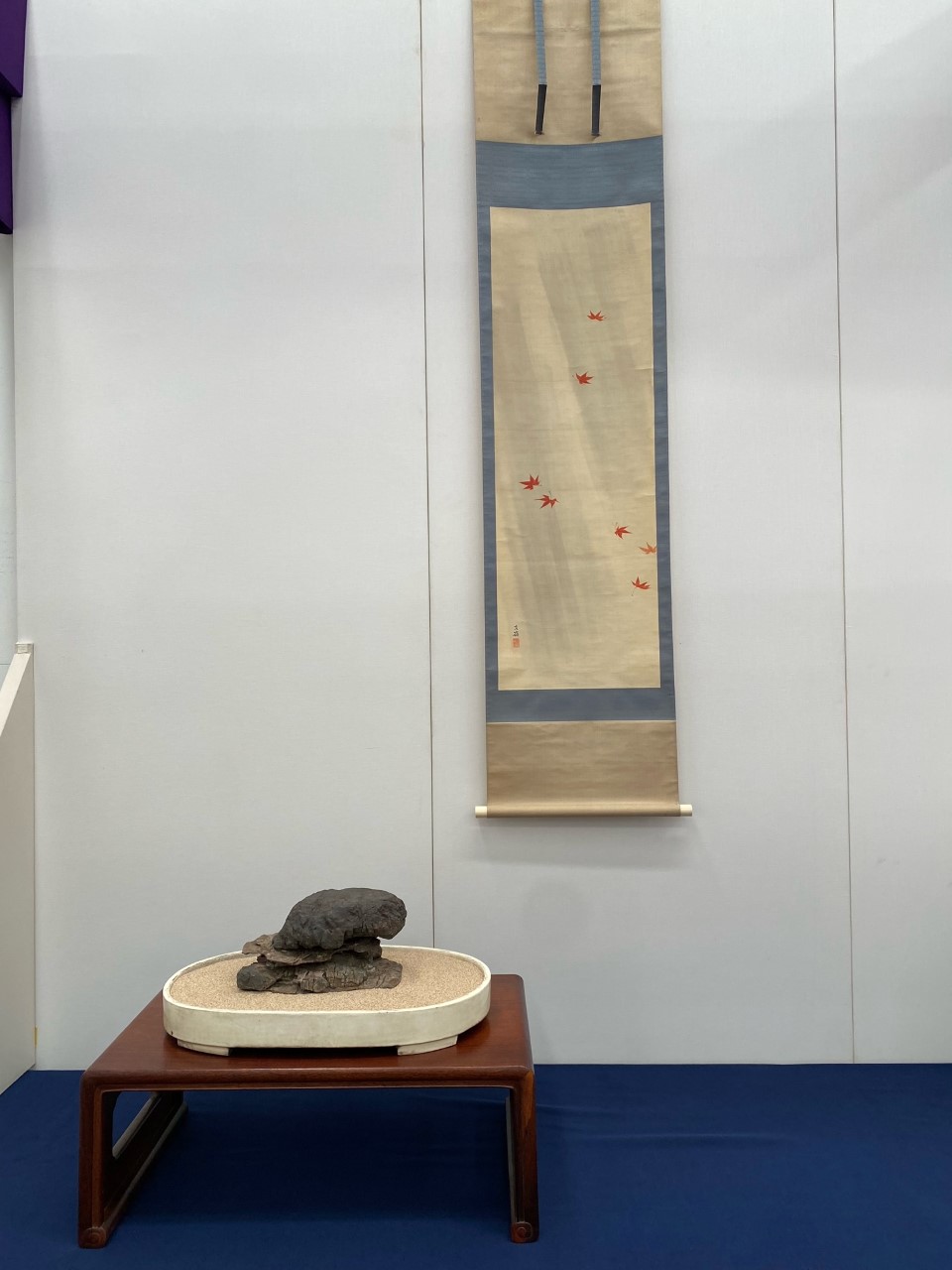
|
|

|
| beni Kamogawa ishi |
|
|
|

|
|
The special exhibition area this year focused on the collection of one Honde Kozaemon, who owns a number of important suiseki, including this wonderful Setagawa kin’nashiji ishi.
This type of Setagawa stone is quite rare, and its beauty speaks for itself.
|
| Setagawa kin’nashiji ishi |
|
|
|
|
|
This well-known Mikura ishi from Shizuoka Prefecture shows beautifully on its thin daiza, and is one of the most recognized waterpool stones in Japan. Its center is deeply eroded, and resembling a tsukubai (type of stone washbasin found in Japanese gardens), it is the type of stone that would appeal to practitioners of the tea ceremony.
|
|

|
|

|
| Mikura ishi |
|
| |
|
|
Ubusan seki like this are of a very dry looking, almost sandstone like material, which perfectly suits the atmosphere of a dilapidated hut stone like this.
|
|
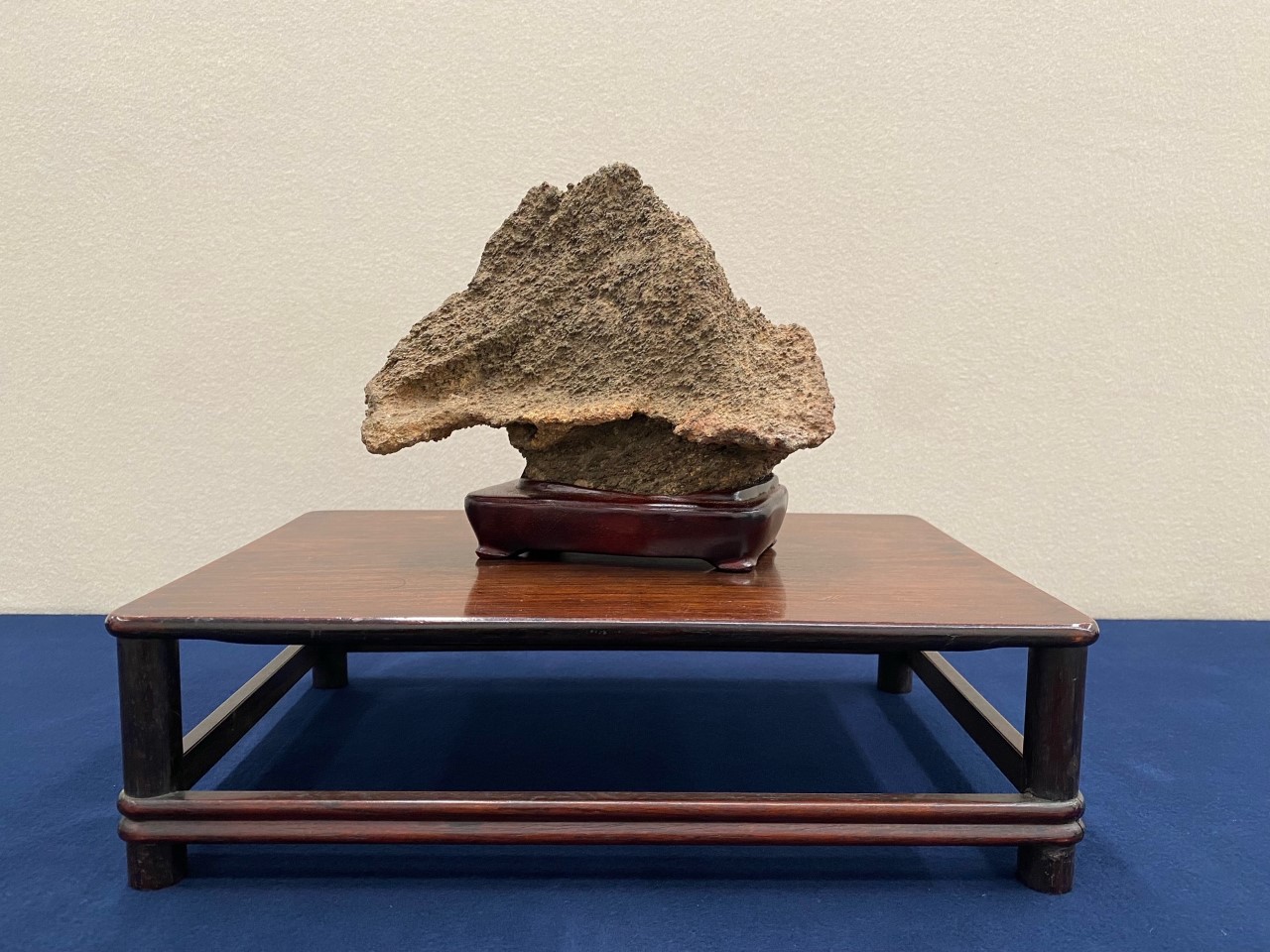
|
| |
|
Ubusan seki
Dilapidated hut stone
|
|
|
|

|
|
This doban display of a coastal Kamogawa ishi on a bamboo display stand is perfect for summer.
Seeing it here in the cold month of February makes one anxious for warmer weather to come soon.
|
Coastal Kamogawa ishi |
|
|
|
| |
|
| Despite the attendance and reserved atmosphere of the time, there were a number of inspiring entries this year, and we can only hope that peace prevails throughout the world in the months to come so that the 10th installment of the exhibition next year will be a great success, and a show to remember. |
|
